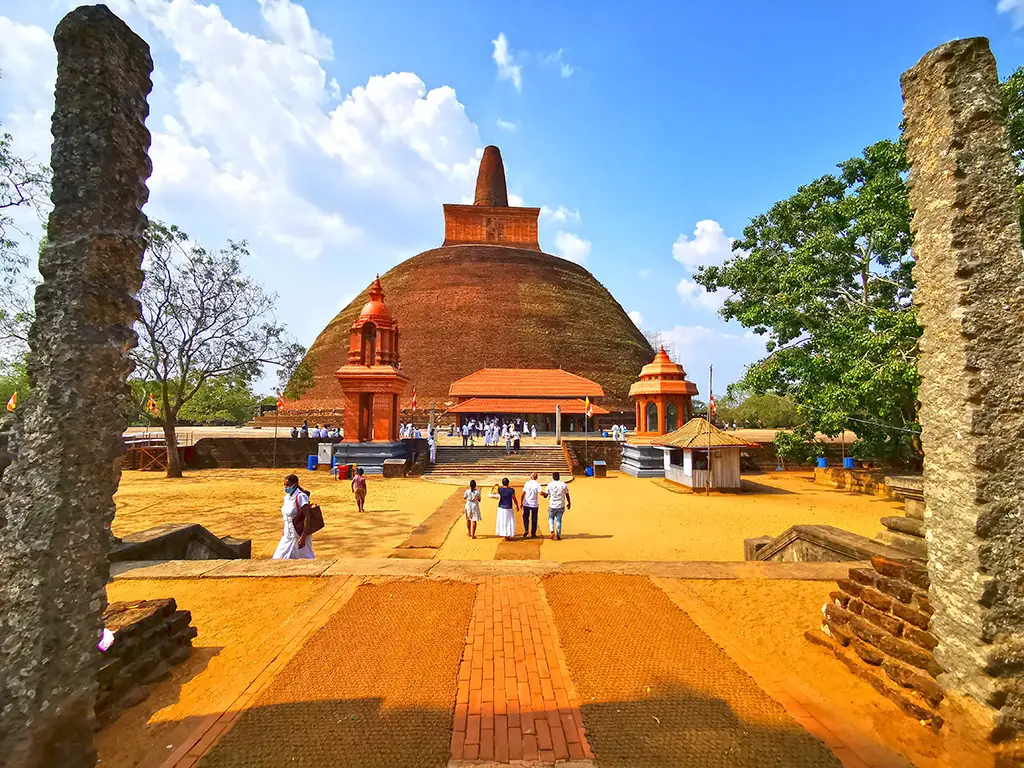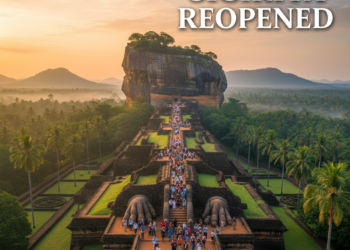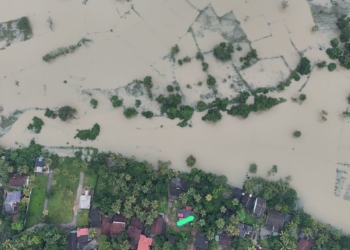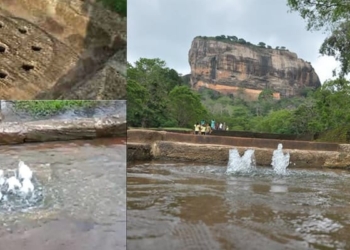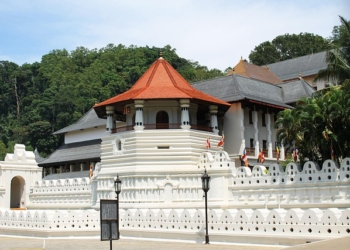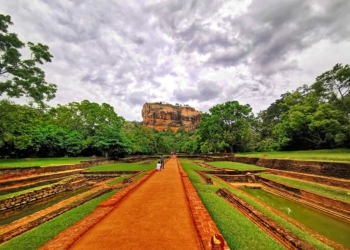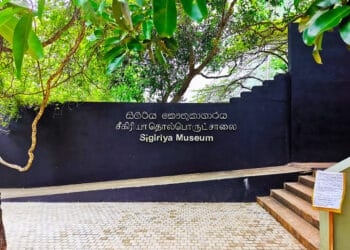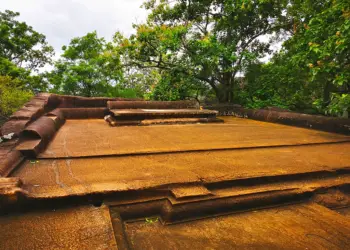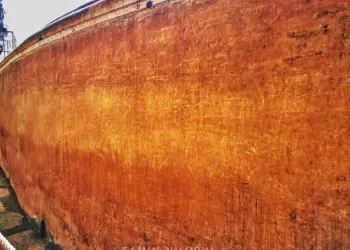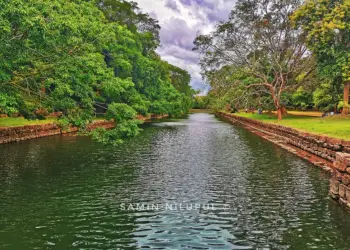Abhayagiriya, formerly known as Abhayawala, Abhaya Viharaya, Abhaya Yuttara, Uttara Vihara etc., is a place of worship which is one of the most important places and events in the Buddhist history of Sri Lanka. The temple was built around 69 BC by King Walagamba (103 BC to 89-77 BC). The Abhayagiri Vihara was initially associated with the Maha Vihara, the highest institution in Sri Lanka, but over time, differences arose between the two Viharas. The Maha Vihara respected Theravada, and Abhayagiri was a center for the views of the Dharmaruchi sect, Vaithulyavada and Vapiriyavada, which were brought from India from time to time.
The gradually growing Abhayagiri faction often received royal patronage. King Gajaba (114-136 AD) enlarged the Abhayuthara Stupa and built a reservoir called Gaminitissa to provide water to the lands reserved for its existence. King Kanitutissa (167-186 AD) built a beautiful mansion called Ratna Prasadaya for the Mahanaga Thero of Thuparama who belonged to the Abhayagiri sect. Abhayagiriya flourished during the reign of King Mahasen (279-301 AD). The king demolished the temples belonging to the Maha Vihara and took the contents and used them for the development of the Abhayagiri Vihara. King Mahasen also took the Buddha statue called “Mahakalashila Pratima” which belonged to Thuparamaya to Abhayagiri.
The Mihintale Se Giriya and the Thuparamaya temple which belonged to the Maha Vihara were handed over to the Abhayagiri Party. But in the last days of the king, the Abhayagiri party had to face great calamities. The gradually growing Abhayagiri faction often received royal patronage. King Gajaba (114-136 AD) enlarged the Abhayuthara Stupa and built a reservoir called Gaminitissa to provide water to the lands reserved for its existence. King Kanitutissa (167-186 AD) built a beautiful mansion called Ratna Prasadaya for the Mahanaga Thero of Thuparama who belonged to the Abhayagiri sect. Abhayagiriya flourished during the reign of King Mahasen (279-301 AD). The king demolished the temples belonging to the Maha Vihara and took the contents and used them for the development of the Abhayagiri Vihara. King Mahasen also took the Buddha statue called “Mahakalashila Pratima” which belonged to Thuparamaya to Abhayagiri. The Mihintale Se Giriya and the Thuparamaya temple which belonged to the Maha Vihara were handed over to the Abhayagiri Party. But in the last days of the king, the Abhayagiri party had to face great calamities.
The gradually growing Abhayagiriya faction often received royal patronage.King Gajaba (114-136 AD) enlarged the Abhayuthara Stupa and built a reservoir called Gaminitissa to provide water to the lands reserved for its existence.King Kanitutissa (167-186 AD) built a beautiful mansion called Ratna Prasadaya for the Mahanaga Thero of Thuparama who belonged to the Abhayagiri sect.Abhayagiriya flourished during the reign of King Mahasen (279-301 AD).The king demolished the temples belonging to the Maha Vihara and took the contents and used them for the development of the Abhayagiri Vihara.King Mahasen also took the Buddha statue called “Mahakalashila Pratima” which belonged to Thuparamaya to Abhayagiri.The Mihintale Se Giriya and the Thuparamaya temple which belonged to the Maha Vihara were handed over to the Abhayagiri Party.But in the last days of the king the Abhayagiri party had to face great calamities.
Abhayagiriya Dagaba
The Dagaba belonging to the Abhayagiri Vihara is located to the north of the old city of Anuradhapura. Hence it was called “Uttara Maha Chaitya” in the past. Although the Abhayagiri Vihara was established by King Walagamba, it is not specifically mentioned in the Mahavamsa that he built a Dagaba. But it must be admitted that he built a dagoba on that land. The first mention of the Abhayagiri Stupa in the Mahavamsa is in the story of King Gajaba enlarging the Abhayagiri Dagoba. Today we see the Abhayagiri Stupa which was renovated by the old King Parakumbha. It is also of infinite archaeological value as it has not been fully restored at present. It is said that King Gajaba, who enlarged the Abhayagiri Dagoba at that time, established four “ancient mouths” (Wahalkada) at the four gates. It is unclear what is meant by “ancient mouth”.This is presumed to be a creation called “Ayaka” mentioned in an inscription of King Kanittatissa.”Ayaka” must be a different form of the design called “Wahalkada” in Sinhala.
Until the end of the 19th century AD, the Abhayagiri Dagoba was covered with jungle and dilapidated. Then the surrounding forest area was cleared and the Dagaba was raised. In 1890, the Government of Ceylon rebuilt the fort with the Rebellion. This stupa was also built in accordance with the principles followed in the construction of other stupas in Sri Lanka. The Dagaba is located in a flat courtyard which is about 587 square feet in size and 6 feet high. The sand dune, which is considered to be a Pradakshina path, is about 95 feet wide. The hemispherical nave is finished right in the middle of the square courtyard. The base of the dagoba consists of 3 pesa rings. The diameter of the lower pessary is 355 feet. The height is 6.5 feet. The diameter of the uterus on the upper pessary is 310 feet. The square at the top of the nave is 35 feet high. It is square and one foot is 75 feet. Starting from the courtyard in the middle of the square box, the cylindrical god box is 15 feet high and 30 feet in diameter. The tower revolt was located on the fort.
The top is crumbling. The total height of the tower is about 42 feet. Thus the height of the entire dagoba is 245 feet. The flat stone slabs about 6 inches thick found in the tower must have been the Jatras at the top of the Dagaba. These are spaced about 2.5 feet apart, probably in the shape of a cataract. It is said that King Voharikatissa (200-231 AD) built a Jatra on the Dagaba. The pieces of stone found scattered on the courtyard must have been parts of a stone sceptre carrying a Jatra. Abhayagiri holds a special place among the Buddhist stupas in Sri Lanka due to its size. It is second only to the Jetavana dagoba in Anuradhapura. According to Fa-Hsien, the stupa was erected on a footprint placed at this place when the Buddha visited Ceylon. But there is no mention of relics being treasured here.
Scholars have debated the identity of the Abhayagiri Dagoba in the last century. This is due to the renaming of the two stupas, Abhayagiri and Jetavana, as accepted by archaeologists at the time. The history of Abhayagiri and Jetavana is not mentioned in any history book. The first mention of this was made by the Fa-Hien monk. The Thero states that Mihintale is located 40 Chinese wood east of the Abhayagiri Vihara. (5 Chinese wood is 1 mile. 40/5 = 8 miles)Archaeological evidence suggests that Fa-Hsien’s statement was correct. Ancient inscriptions have also been instrumental in identifying the Abhayagiri.
